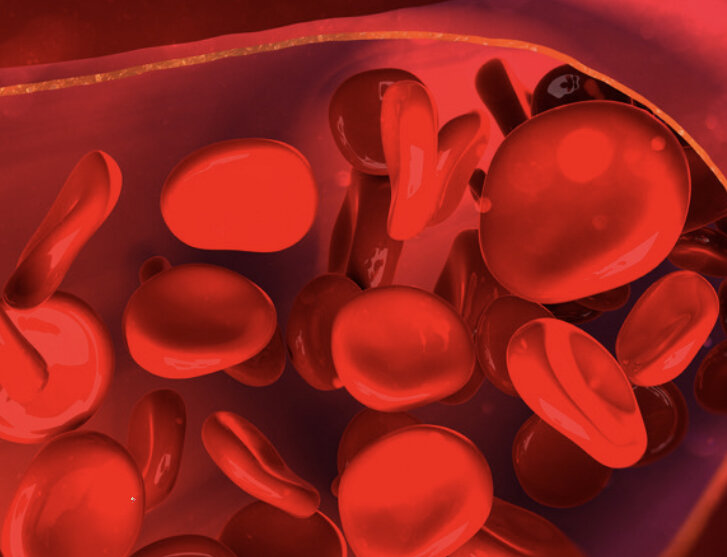The "Red Scalp Sign" of Polycythemia Vera (Primary Polycythemia)
Polycythemia must be remembered as a rare cause of ‘red scalp.
There are many causes for having a red scalp. Typical causes including seborrheic dermatitis, psoriasis, irritant contact dermatitis, allergic contact dermatitis and immune based diseases (such as lupus or lichen planopilaris). A 2003 study reminded us all that polycythemia can rarely also be a cause of red scalp and should be added to our list.
Polycythemia is a condition that results in increased number of circulating red blood cells. Patients who have polycythemia have increased hemoglobin levels, increased hematocrit and increased red blood cells. In primary polycythemia the problem lies in a mutation (JAK2) that causes bone marrow cells to make more red blood cells. In secondary polycythemia, there is an increased production in the hormone erythropoietin. This might come from a variety of reasons including heart disease, lung diseases, and kidney diseases. Polycythemia is often considered when the hematocrit climbs above 48 % in women and 52 % in men and hemoglobin climbs above 16.5 g/dL in women and 18.5 g/dL in men.
The clinical presentation of polycythemia comes from the increased numbers of red blood cells in the blood and the increased viscosity of the blood. Fatigue, dizziness, sweating and redness in the face (ruddy complexion) and conjunctival redness are common. Examination by a doctor may reveal an enlarged spleen. Blood clots are among the more worrisome signs including heart attacks, stroke and deep vein thromboses. A variety of clues are also important to note: some patients with polycythemia have itching in the water (aquagenic pruritus), red/burning feet and hands (Erythromelalgia) and gouty arthritis (from increased uric acid).
Polycythemia vera is a bone marrow disease that leads to an increased number of red blood cells in the blood. It can rarely cause a red scalp, which has been termed the “red scalp sign.”
Polycythemia as a Cause of Red scalp.
In 2003, Dr. Marinella published a nice report in the journal Mayo Clinic Proceedings that serves to remind us all that polycythemia must be on our list of causes of a red scalp. He named the observation the “red scalp sign.”
The actual report was that of a previously healthy 75-year-old man who came into the emergency department with syncope (fainting) while he was square dancing. He had some nose bleeds in the months before but was otherwise healthy. When examined, doctors took note of a ruddy facial complexion, conjunctival injection, and diffuse redness of the scalp. The patient's wife commented that the redness had been present for months. The patient’s blood tests showed high hemoglobin (21.9 g/dL) and elevated hematocrit (67%). This white cell count was elevated slightly (11 × 109/) and so was his platelet count (482 × 109/L). His erythropoietin level was normal.
A diagnosis of polycythemia was ultimately made and the patient was treated with phlebotomy. The patient’s scalp redness eventually resolved with treatment of the polycythemia.
Reference
Mark A. Marinella, MD. The Red Scalp Sign Mayo Clin Proc. 2003;78:252-253
This article was written by Dr. Jeff Donovan, a Canadian and US board certified dermatologist specializing exclusively in hair loss.

